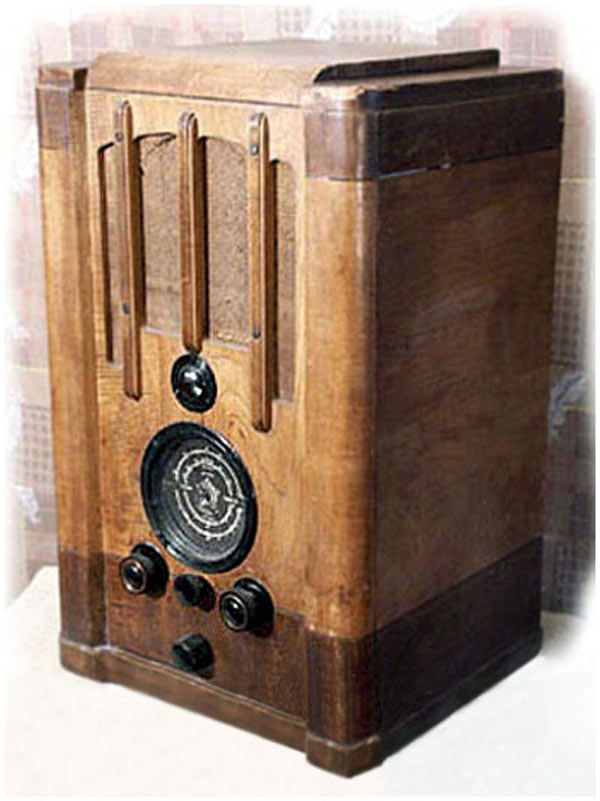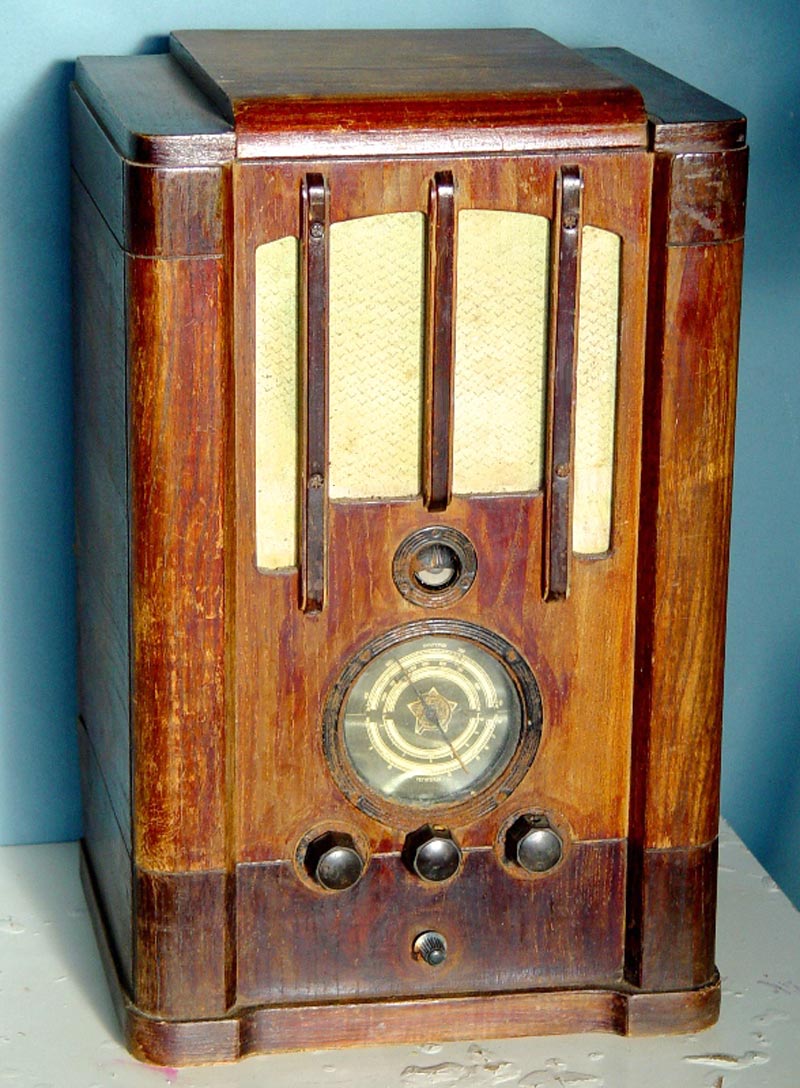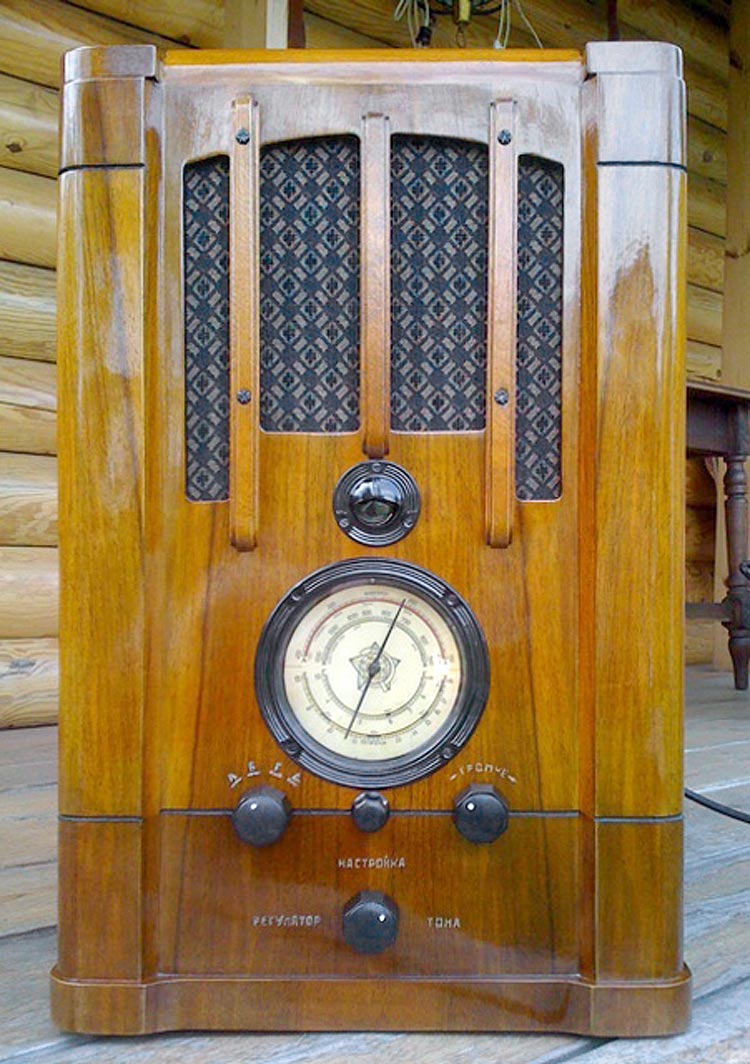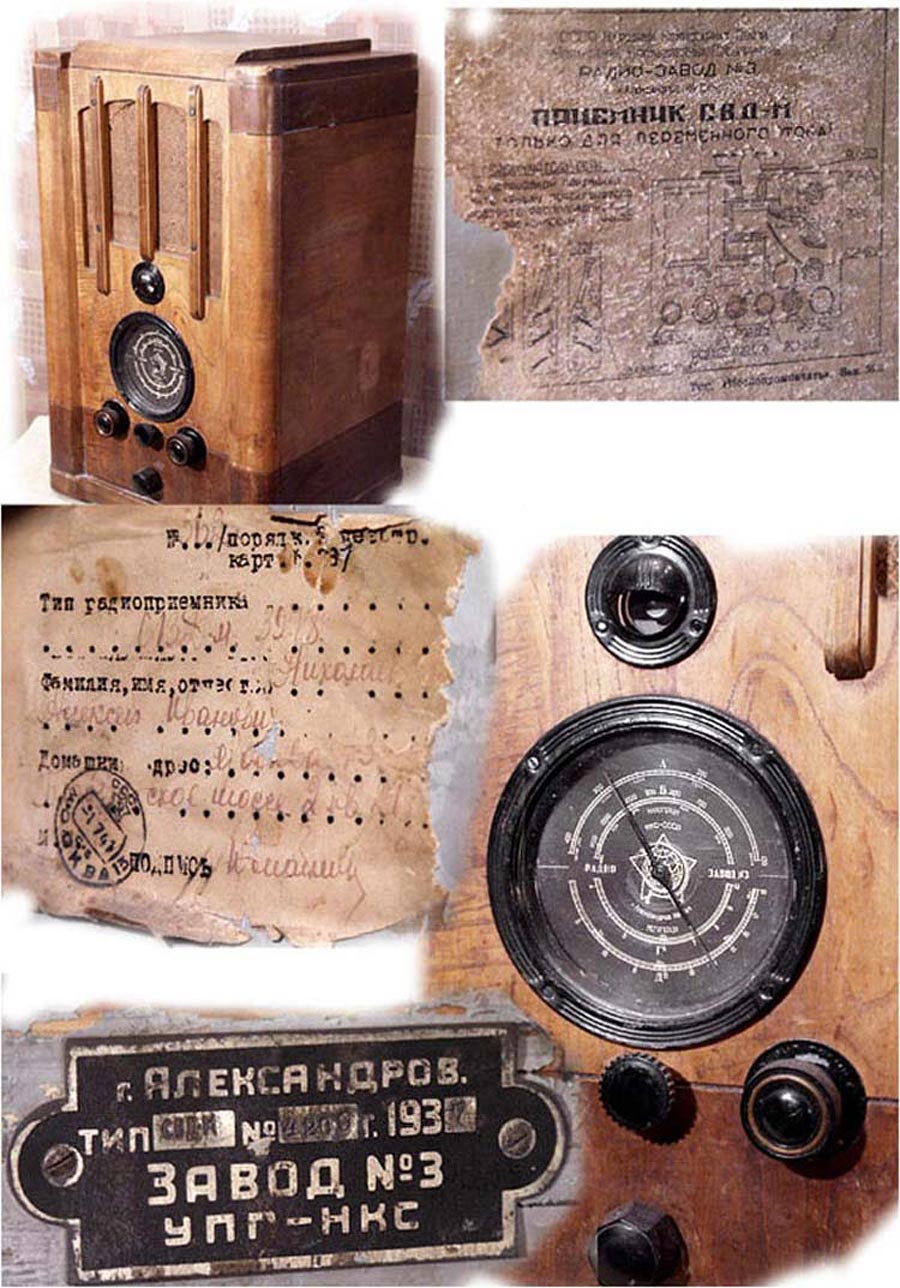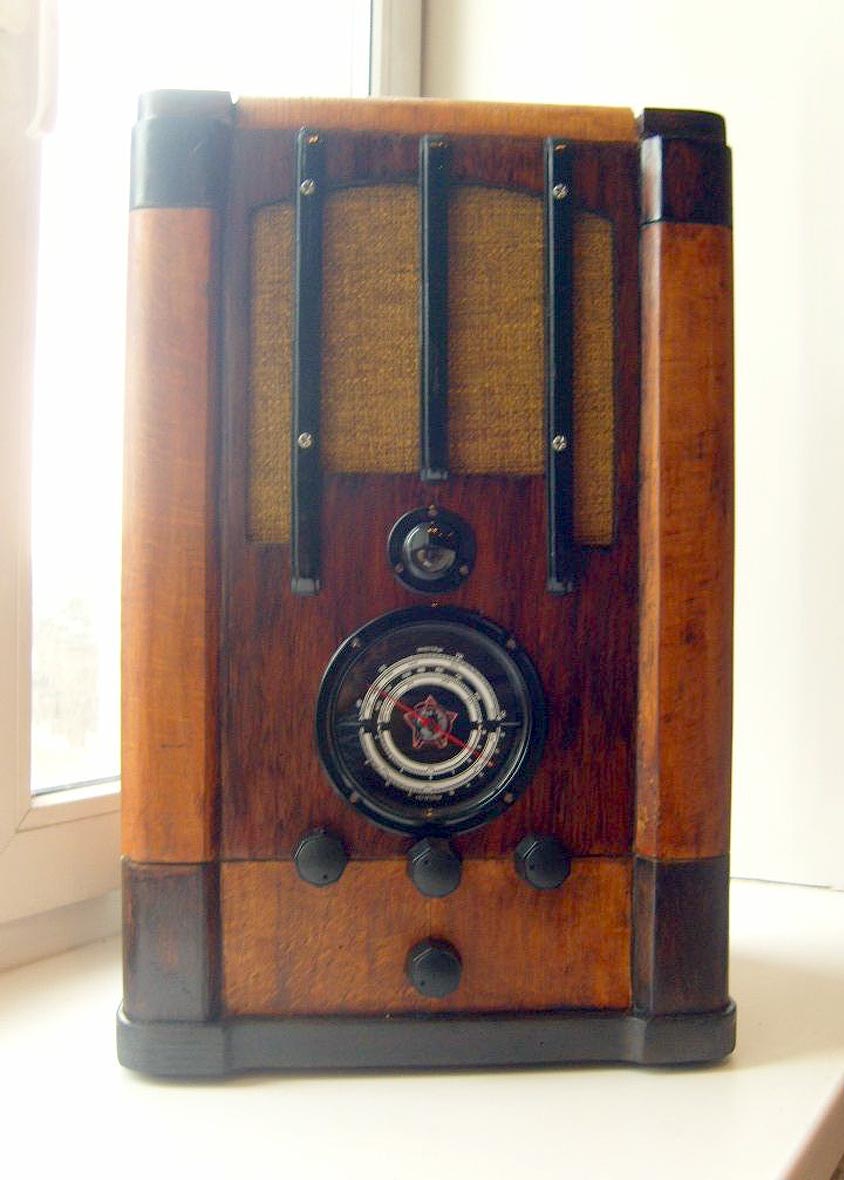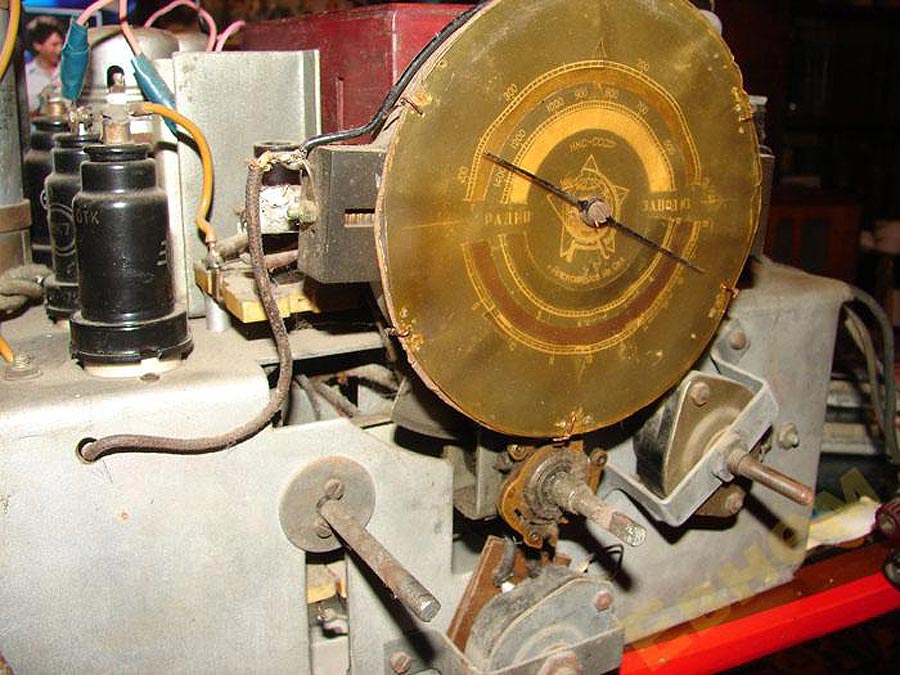Network tube radio receiver `` SVD-M ''.
Tube radios.DomesticSince October 1937, the network tube radio receiver "SVD-M" has been producing the Aleksandrovsky radio plant. The all-wave ten-lamp superheterodyne receiver "SVD-M" is a modernized version of the "SVD" and "SVD-1" receivers. Unlike the US-licensed SVD-1 radio, the SVD-M radio is considered a completely domestic development. The release of the receiver was facilitated by the development of the Svetlana plant in the production of better and more stable, in comparison with glass, metal lamps. But in most of the manufactured radio receivers, in addition to domestic radio tubes, better quality American lamps were still used. The SVD-M radio receiver is assembled on a high chassis, covered with a pallet at the bottom. On the top of the chassis are lamps, a tuner, a power transformer and electrolytic capacitors; the rest of the elements are inside the chassis. Access to individual elements is difficult, since the device uses a multi-storey installation. On the side walls of the box there are special shock absorbers on which the chassis of the receiver is mounted. A dynamic speaker is located at the top of the drawer. The receiver body is a veneered veneer sheet, rectangular wooden box. There are four control knobs on the front side of the case: the upper left is the range switch, the upper right is the volume control, the central one is the tuning knob, the knob located at the bottom is the tone control and the mains switch. The double adjustment knob is equipped with a gearbox. The transmission of rotation to the tuning capacitor shaft is carried out by a metal spring friction clutch. The scale is round, divided into 4 sub-ranges. Above the scale is the screen of the electron beam tuning indicator. On the back of the receiver chassis are the adapter, antenna and ground connections. The rear wall gives access to the high box chassis, split design. Switching the mains voltage is carried out by rearranging the jumpers on a special block, closed by a steel sliding casing, on which a fuse is also installed. The power transformer is enclosed in a metal shield. The UHF and local oscillator loop coils are mounted as a separate shielded unit, which is an independent structure attached to the chassis with four bolts. The model uses the original tuning capacitor - it is four-section, mounted on shock-absorbing gaskets and covered with a cardboard casing. The inverter transformers are located under the chassis and are adjusted with brass screws brought out to the rear panel of the chassis. Range switch - board, three-board. The output transformer is also enclosed in a casing and placed on the `` basket '' of the loudspeaker with bias. Overall dimensions of the receiver 560x360x290 mm, weight 16 kg. Range of received frequencies: 1. Range "A" or DV - 750 ... 2000 m (400 ... 150 kHz); 2. Range "B" or CB - 200 ... 556 m (1500 ... 540 kHz); 3. Range "G" or KV-1 - 85.7 ... 33.3 m (3.5 ... 9.0 MHz); 4. Range "D" - KV-2 - 36.6 ... 16.7 m (8.2 ... 18.0 MHz). Intermediate frequency 445 kHz. The output power of the receiver at the impedance of the equivalent speaker with a nonlinear distortion of 10% is 3 W. EMF sensitivity in the antenna, measured at an output power of 0.5 W: in the range A (250 kHz) - 20 μV, in the range B (1.0 MHz) - 10 μV, in the range C (6 MHz) - 20 μV, in the range D (12.0 MHz) - 30 μV. The receiver is powered from an alternating current network with a voltage of 110, 127, 220 V. The power consumed from the network does not exceed 100 W.